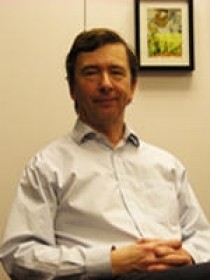
RI Seminar
November

12:00 pm to 1:20 pm
Event Location: Hamburg Hall 1000
(PLEASE NOTE TIME AND LOCATION)
Tea Reception
4:30 PM GHC 6115
Bio: Dr. Wieslaw K. Binienda, F. ASCE. currently serves as Professor and Chairman of the Department of Civil Engineering at the University of Akron. He received his Master of Science degree from the Warsaw Polytechnic and Ph.D. in Mechanical Engineering from Drexel University in Philadelphia, Pennsylvania.
His research interests include high energy impact simulation, fracture and damage of materials with emphasis on advanced composites, explicit and implicit finite element analysis, smart materials, structural design as well as optimization, characterization and constitutive equation development for ceramics, metals and polymer matrix composites.
He has authored or co-authored 55 journal papers, 21 NASA Technical Memoranda, and about 100 other publications. He successfully advised 15 PhD and 13 MS graduate students. He is a Principal Investigator or Co-PI of research projects in the amount of over $8.5M from federal agencies like NASA, NSF, state agencies such as EPIC, OAI, and the private
industry.
In 2004 Dr. Binienda received a prestigious NASA Award titled “Turning Goals Into Reality” for valuable contribution to the Jet Engine Containment Concepts and Blade-Out Simulation Team and Exceptional Progress Toward Aviation Safety.
In 2007 Dr. Binienda was honored with the ASCE Fellow in recognition for his outstanding research accomplishments. He is also a recipient of the Outstanding Researcher Award and the Louis A. Hill, Jr. Award of the University of Akron. Recently, he received two prestigious ASCE awards: Outstanding Professional Service Award in 2010 and Outstanding Professional Contribution Award in 2011. Polish-American Congress Illinois Division awarded him the Heritage Award in 2012. He was a distinguished keynote speaker at the ASCE Earth and Space Conference in March 2012 in Pasadena, CA. He also was invited as the keynote speaker at the Polish-French Symposium on Mechanics at the Polytechnic University in Warsaw in May 2012. Dr. Binienda was also invited by COMAC Corporation as an aviation expert for the ISATCA Conference in Beijing China, in September 2012, where he presented his analysis of the Tu-154M airplane crash in Smolensk.
In 2010 Dr. Binienda was elected as the Editor-in-Chief of the Journal of Aerospace Engineering. Dr. Binienda also serves as co-director of the Gas Turbine Testing Center at the University of Akron where he is responsible for impact, material and structural experiments.
Abstract: We will show how a large scale simulation approach, that has proven successful in researching dynamics of high-energy impact in engineering, can be used to validate results of forensic investigations of air traffic accidents. In our case study involving the tragic April 2010 crash of Polish Air Force One in Russia, we use the finite element methodology to enable comprehensive high fidelity simulations of certain events that reportedly might have occurred during the crash. Using only publicly available data as inputs, we analyze physics of a presumed collision of a wing of the aircraft and a birch tree, and
look into various scenarios of structural disintegration. Curiously, our results expose infeasibility of many findings published in the official investigation reports. The presentation will be preceded by a short introduction to the historical and political context of the crash. We argue for and emphasize the benefits of using a scientific method to explain complex events taking place in the physical world.